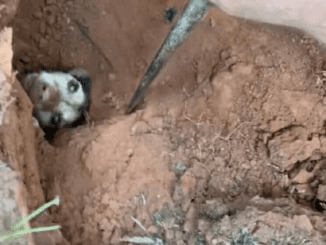Introduction
Australia, renowned for its unique and diverse wildlife, is home to some of the world’s most remarkable avian species. Among these, the Regent Honeyeater (Anthochaera phrygia) stands out as a true jewel, both in its appearance and its ecological significance. In this blog post, we’ll embark on a journey to discover the beauty, ecology, challenges, and conservation efforts surrounding the critically endangered Regent Honeyeater.
1. A Visually Striking Beauty

The Regent Honeyeater is aptly named for its striking appearance. It showcases a predominantly black head adorned with bright, bold yellow markings. These vibrant colors, coupled with its distinctive facial markings and long, slender bill, make it an unmistakable and captivating bird to behold.
2. Ecological Importance

The Regent Honeyeater plays a crucial role in Australia’s ecosystem. As nectar feeders, they are essential pollinators for various native plants, particularly eucalypts. Their feeding behavior supports the reproduction of these plants and contributes to the overall biodiversity of the region.
3. A Melodic Masterpiece

In addition to its appearance, the Regent Honeyeater is known for its melodious and complex songs. Their calls consist of a combination of musical notes and chirrups, making them an auditory delight for birdwatchers. These unique songs are not only beautiful but also serve in communication, particularly during courtship.
4. The Perilous Decline

Despite their striking beauty and ecological significance, Regent Honeyeaters have faced a significant population decline. Habitat loss due to deforestation, land clearing, and urban development has drastically reduced their breeding grounds. Moreover, the decline of their primary food source, nectar-producing plants, further threatens their survival.
5. Conservation Efforts

Efforts to save the Regent Honeyeater from extinction are ongoing. Conservationists, researchers, and bird enthusiasts are working tirelessly to protect and restore their habitat. Reforestation projects focus on replanting native nectar-producing trees and shrubs to provide the birds with much-needed food sources and shelter.
Fecal Content
In conclusion, the Regent Honeyeater is a visual masterpiece, an ecological hero, and a melodious wonder of Australia’s avian world. While facing perilous population declines and the threat of extinction, this bird is a testament to the urgent need for conservation and habitat restoration efforts. By protecting the Regent Honeyeater and its habitat, we not only safeguard the future of this magnificent species but also contribute to the preservation of Australia’s unique and fragile ecosystems. The hope is that with concerted efforts, this critically endangered avian jewel will once again thrive in the wild, filling the Australian skies with its vibrant colors and enchanting melodies.


